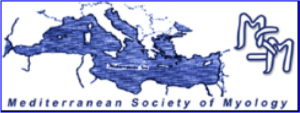Late-onset myopathies are not well-defined since there is no clear definition of ‘late onset’. For practical reasons we decided to use the age of 40 years as a cut-off. There are diseases which only manifest as late onset myopathy (inclusion body myositis, oculopharyngeal muscular dystrophy and axial myopathy). In addition, there are diseases with a wide range of onset including ‘late onset’ muscle weakness. Well-known and rather frequently occurring examples are Becker muscular dystrophy, limb girdle muscular dystrophy, facioscapulohumeral dystrophy, Pompe disease, myotonic dystrophy type 2, and anoctamin-5-related distal myopathy.
The above-mentioned diseases will be discussed in detail including clinical presentation – which can sometimes lead someone astray – and diagnostic tools based on real cases taken from the author’s practice. Where appropriate a differential diagnosis is provided. Next generation sequencing (NGS) may speed up the diagnostic process in hereditary myopathies, but still there are diseases, e.g. with expansion repeats, deletions, etc, in which NGS is as yet not very helpful.






